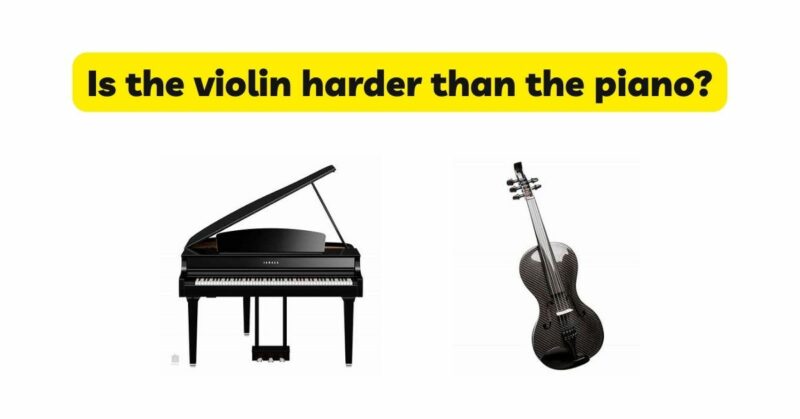The violin and the piano are two of the most popular and widely recognized musical instruments. Both instruments have their unique challenges and complexities, but there has been a long-standing debate about which one is harder to learn and master. In this article, we will delve into the intricacies of both instruments, examining their technical demands, learning curves, and individual nuances to address the question: Is the violin harder than the piano? By exploring various aspects of each instrument and debunking common misconceptions, we aim to provide a balanced perspective on the relative difficulties of learning and mastering the violin and piano.
- Technical Challenges: a) Violin: The violin requires precise finger placement on the fingerboard, mastery of bowing techniques, and the ability to produce a clear and resonant tone. It demands the development of a strong sense of intonation, bow control, and coordination between the left and right hand. b) Piano: The piano requires coordination between both hands, independent finger movements, and the ability to navigate a wide range of keys and notes simultaneously. It involves mastering complex fingerings, hand positions, and playing dynamics.
- Learning Curves: a) Violin: The violin has a steep learning curve, primarily due to its lack of frets. Beginners must learn to accurately place their fingers on the fingerboard to produce the desired notes, which can be challenging. Additionally, bowing techniques, such as producing a smooth and consistent sound, require dedicated practice and coordination. b) Piano: The piano offers a more straightforward visual representation of the notes, as the keys are laid out in a linear fashion. Beginners can quickly grasp basic melodies and chords. However, achieving a high level of proficiency on the piano, including advanced techniques and repertoire, requires years of dedicated practice.
- Physical Demands: a) Violin: Playing the violin involves holding the instrument correctly and maintaining proper posture. The left hand must exert finger pressure on the strings, while the right hand controls the bow, requiring fine motor skills and strength in both hands and arms. b) Piano: Playing the piano requires coordination between both hands and the ability to perform complex finger movements simultaneously. While physical strength is not as crucial as in the violin, pianists must develop finger dexterity, agility, and hand independence.
- Interpretation and Expression: a) Violin: The violin is known for its expressive capabilities, allowing players to convey emotions through nuances in tone, vibrato, and bowing techniques. Developing a personal and distinct musical interpretation can be a lifelong pursuit. b) Piano: The piano offers a wide range of dynamic possibilities and expression through various playing techniques. Pianists have the advantage of using their entire body to convey musicality, including pedal techniques and control over dynamics.
- Repertoire: a) Violin: The violin repertoire spans a vast range of styles and genres, including classical, jazz, folk, and contemporary music. Mastering different techniques and styles can be challenging, as each requires specific skills and musical understanding. b) Piano: The piano repertoire is equally diverse, encompassing classical, jazz, pop, and more. Pianists have access to a wide array of solo, chamber, and orchestral literature, making it an instrument with versatile possibilities.
Conclusion: In conclusion, determining whether the violin is harder than the piano is subjective and depends on various factors. Both instruments present unique challenges and require dedicated practice and commitment to achieve mastery. The violin demands precise finger placement, bow control, and intonation, while the piano requires coordination, independent finger movements, and the ability to navigate multiple notes simultaneously. The learning curve and physical demands differ for each instrument. Ultimately, the difficulty lies in individual preferences, aptitude, and the level of dedication and perseverance put into learning and mastering the instrument. Rather than focusing on which instrument is harder, it is more important to embrace the joy and fulfillment that comes from playing music and appreciate the unique qualities each instrument offers.


